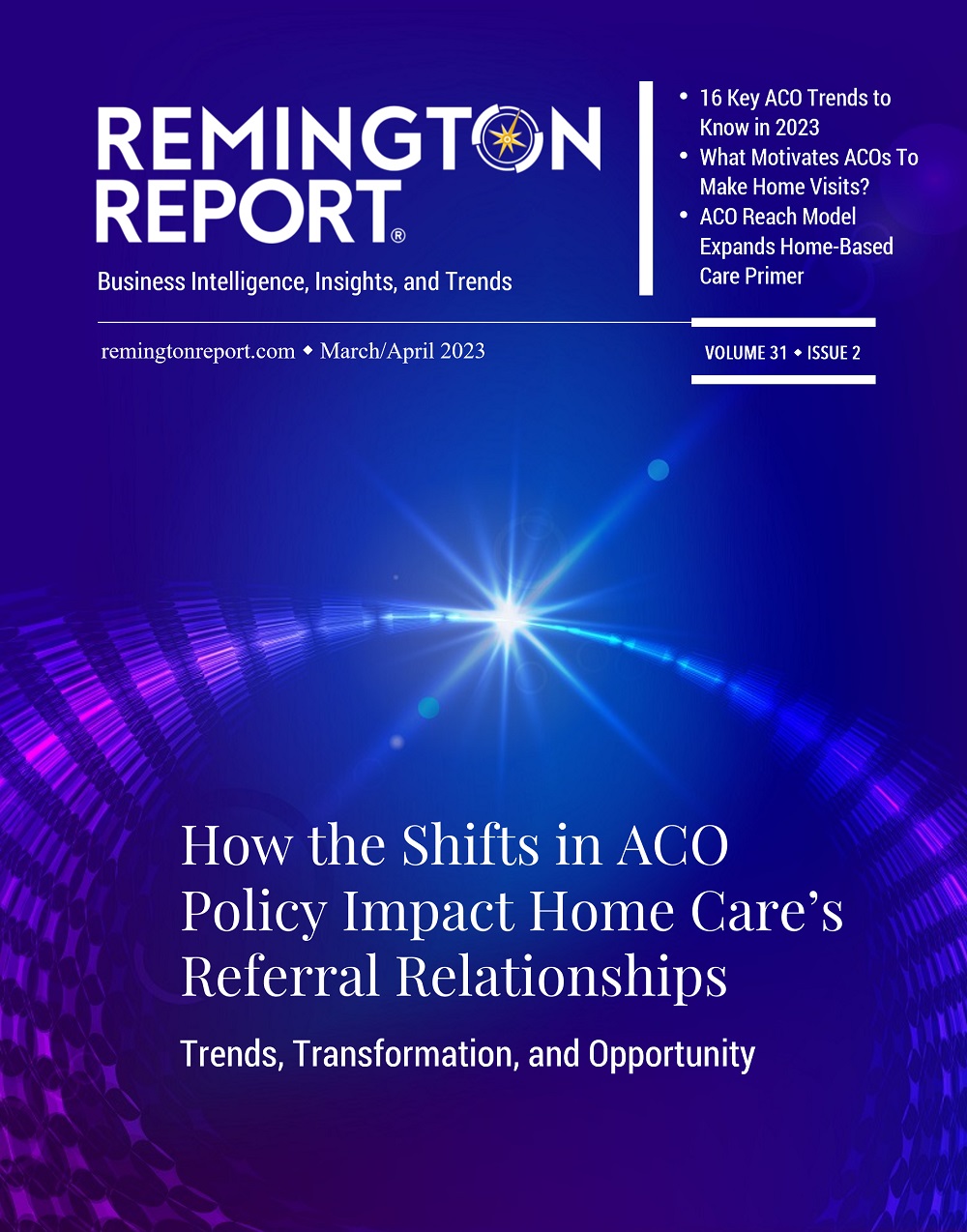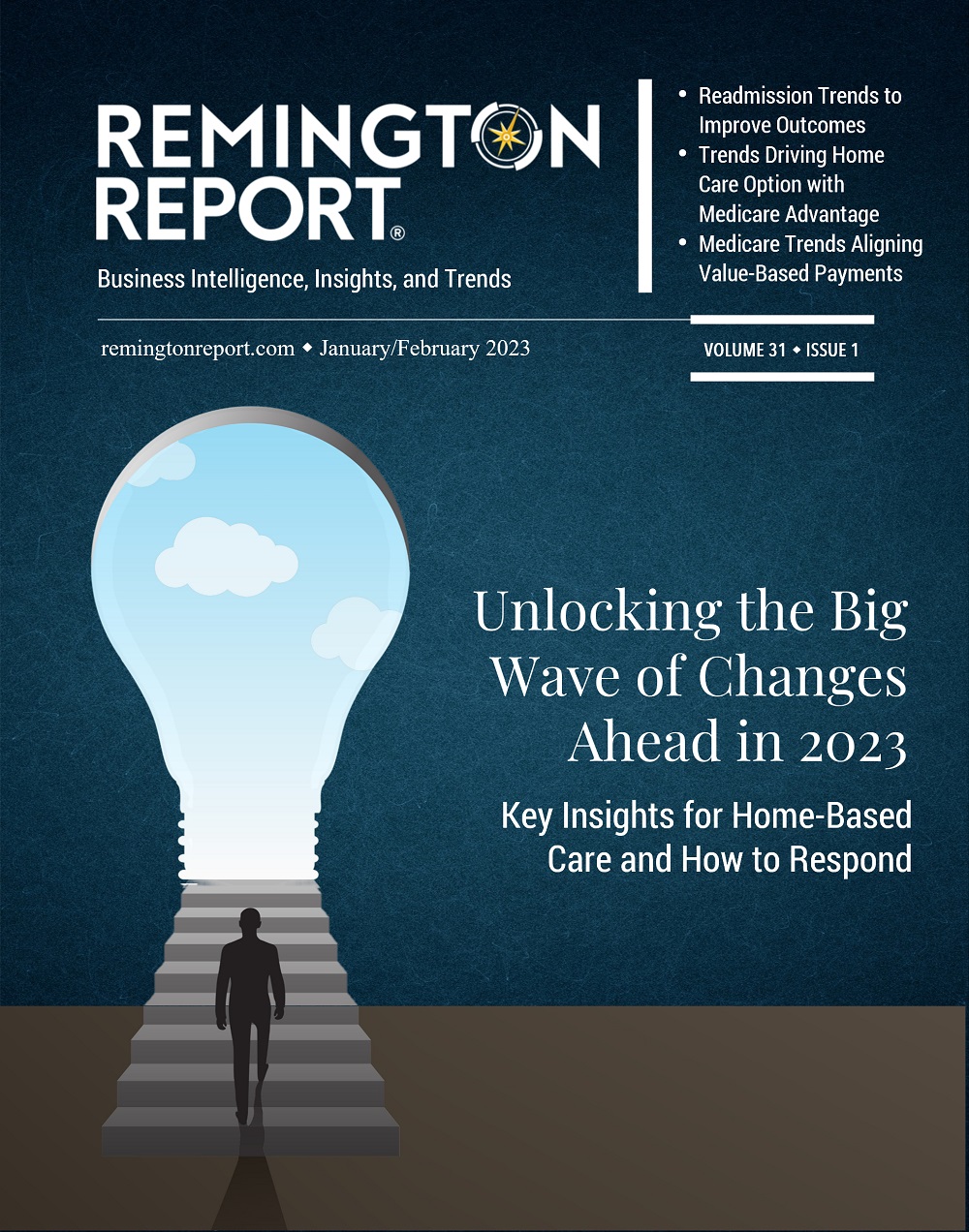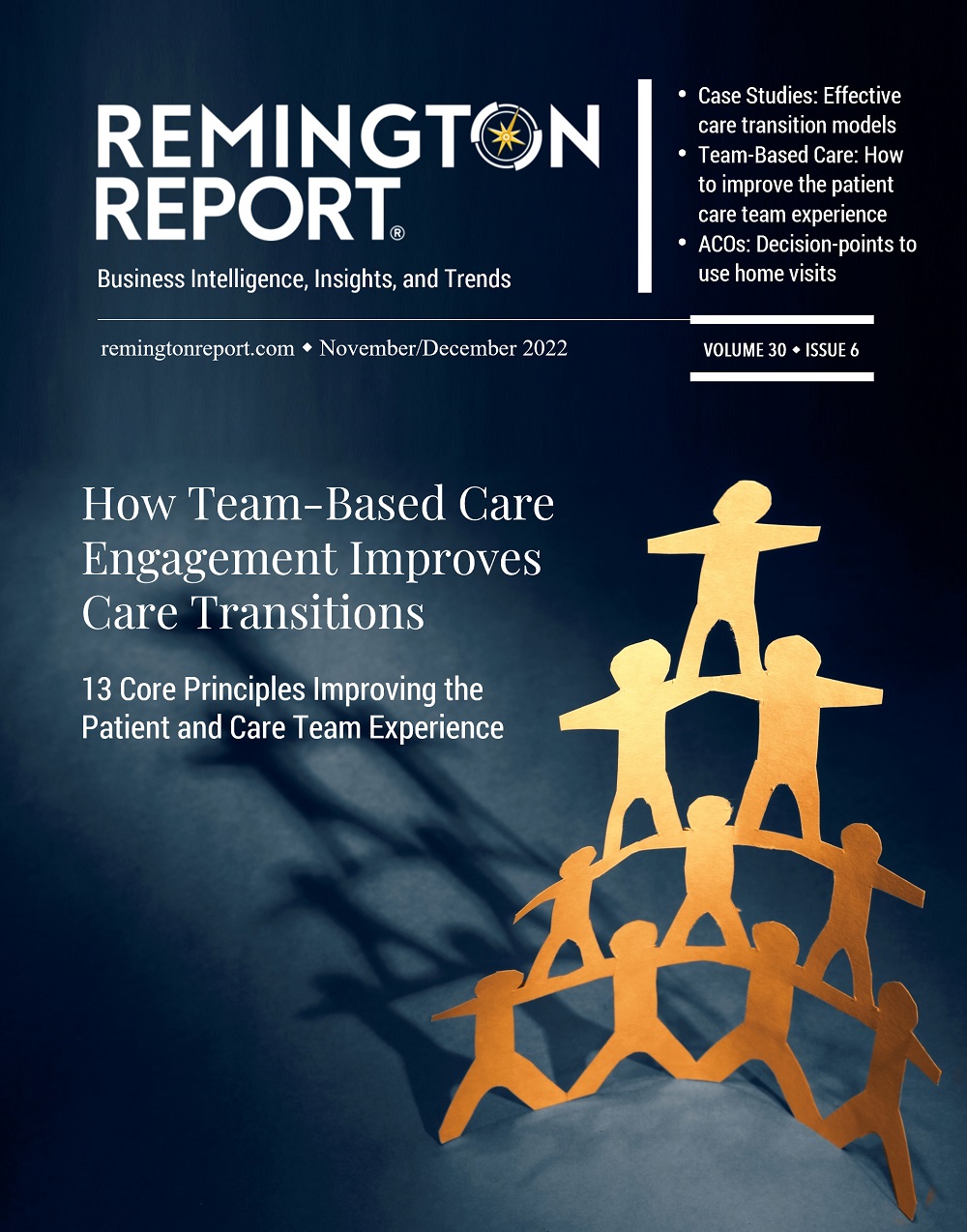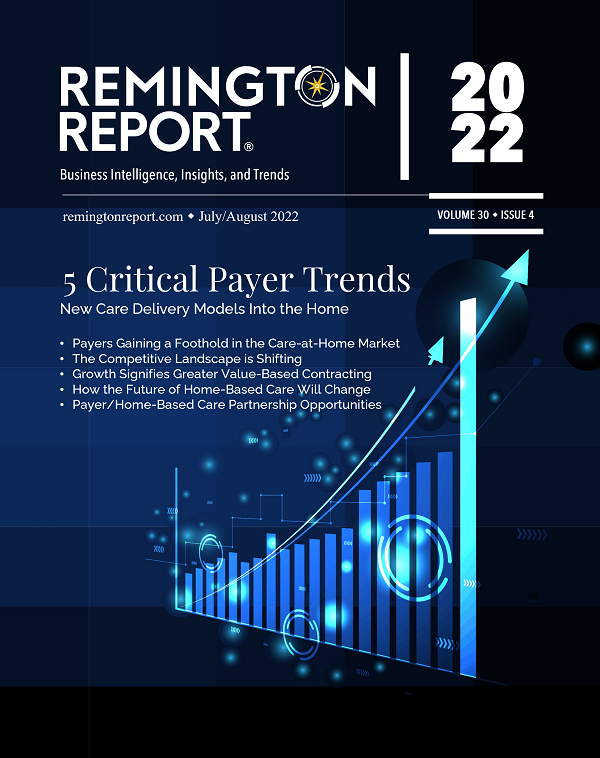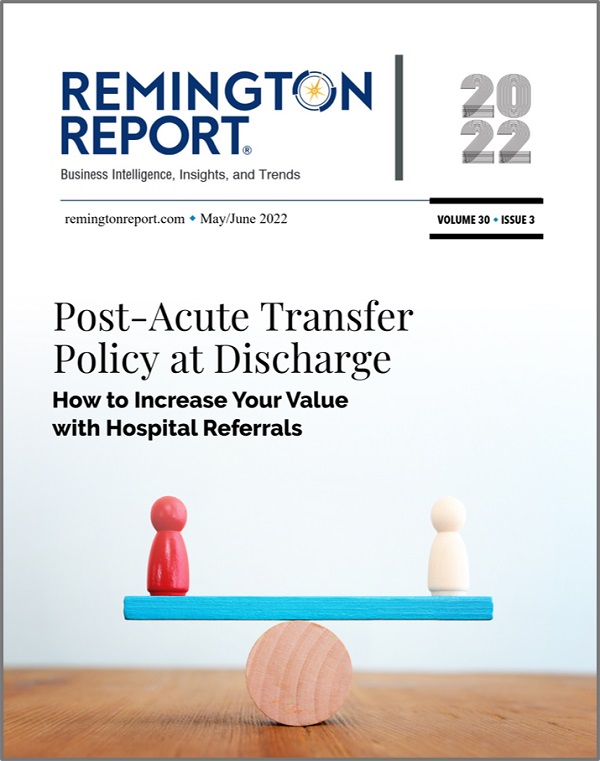INTERACTIVE FEATURES: When viewing this article on an electronic device, note that web addresses are live links. Just click the link to visit that web page.
Click for instructions for moving the PDF into Kindle, Nook, Apple iBooks, and Apple Library.
Changing Delivery Models Are Managing Multiple Chronic Conditions in the Home
Home-based medical care models are shaking-up the $260 billion primary care market. Primary care practices are getting hit hard by the loss of revenue during the COVID-19 pandemic and the impact of the health crisis is forcing organizations to rethink how they operate.
A RAND study found that 81% of people 65+ had multiple chronic conditions (MCC), and with Medicare enrollment expected to grow to nearly 80 million by 2030, the number of people with MCCs can be expected to grow significantly. These patients are expensive.
According to a HealthScape analysis of select Medicare Advantage (MA) markets, members with six or more chronic conditions average more than $30,000 a year in medical expense, almost 4x as expensive as the average Medicare beneficiary. The traditional office-based primary care practice is simply not equipped to manage this MCC population.
How are integrated primary care delivery models addressing chronic care management in the home?
Landmark Health
Landmark Health has experienced a 33% increase in demand for its home-based medical care since the start of the coronavirus pandemic. The model focuses on managing multiple chronic care patients in the home. Partnering with health plans in shared savings arrangements, Landmark’s 24/7 in-home medical care brings medical, behavioral health and palliative care, along with social services to patients in 46 communities across the U.S. As mobile providers, they can visit patients in their homes through in-person house calls and telemedicine visits over video and phone.
Iora Health
Iora Health is a clinic-based, interdisciplinary team model that offers medical care to a broader population of clinically complex patients. Iora partners with a diverse set of customers (including health plans, unions, and employers) and takes full risk, benefiting financially only through improvement in clinical quality and cost of care. Iora has a tailored model that leverages physician providers and non-physician health coaches as primary connection points with patients, identifying and addressing unhealthy habits, managing chronic conditions, and acting as the patient’s health advocate.
Care Management Plus from Intermountain Healthcare
Care Management Plus uses a “care manager” embedded in a PCP office to enhance care for patients with complex needs. These care managers go through specialized training programs and can spend additional time with patients since they are not driven by the FFS model. With support from information technology tools, care managers develop a care plan and provide self-care management. The clinic-based coaching is customized for patients and caregivers, and then patients are referred to necessary community-based resources. model for MCC patients.
Independence at Home
Independence at Home (IAH) is a test program designed by the Center for Medicare & Medicaid Innovation (CMMI) that delivers home-based primary care to Medicare beneficiaries with MCCs. Participating practices provide in-home visits using interdisciplinary teams directed by physicians and nurse practitioners. If providers meet quality standards and financial targets, they receive an incentive payment from CMS. With only 15 HBPC practices and 10,000 Medicare beneficiaries per year, it demonstrated a savings of $100 million in the first five years. Similar savings were demonstrated by the Veteran Administrations Home-Based Primary Care program, including an 89% reduction in nursing home use.
ElderPAC
Based in Pennsylvania, ElderPAC combines in-home primary care through an IAH-certified program with community-based services through Medicare and Medicaid Programs of All-Inclusive Care for the Elderly. An interdisciplinary team consisting of an MD or NP from Penn Medicine, a case manager from Philadelphia Corporation on Aging (PCA), and a community nurse from a Home Health Agency provides in-home care for institutionally qualified dual-eligible.
MedStar
MedStar’s medical house call program in Washington, D.C., offers team-based primary care to patients in their home. Eligible participants must be 65+, live in one of seven zip codes, have a functional limitation that makes it hard to visit a PCP and have insurance that will cover house calls. Providers are available 24/7 and utilize a mobile electronic health record and regional health information exchange to manage care. They also emphasize transitional care, end-of-life care, and caregiver/family support. By one analysis, this amounted to $12,000 in savings per beneficiary.
VA Home-Based Primary Care
For more than 40 years, the VA has been providing home-based primary care to chronically ill veterans. A care team comprised of clinicians, nurses, social workers, dietitians, psychologists, pharmacists, and rehabilitative therapists work together to provide integrated health services, support and education for caregivers, and referrals to community-based resources. Participants are chosen based on cost and chronicity, unlike Medicare’s home health benefit requirements. The program has reported a 24% decrease in cost of care and higher satisfaction and functional status among participants.
ChenMed
Early during the pandemic, ChenMed pivoted from 98% in-center patient appointments to 95% virtual appointments in just one week, according to the company. A physician-led primary care company, ChenMed is focused on providing services to moderate-to-low-income seniors with complex chronic conditions. The company operates more than 60 primary care practices in 10 states and recently announced plans to open 15 more centers in 20 weeks. Chemed’s operational support and risk-focused end-to-end technologies also help many independent medical practices deliver superior outcomes for seniors with Medicare Advantage.
Oak Street Health
As a primary care provider focused on the Medicare population, Oak Street Health went public in August. It operates 54 primary care centers in 9 states targeting seniors who are Medicare Advantage members. A holistic clinical model that integrates physical, emotional, and behavioral interventions via clinicians, counseling, fitness and nutrition coaches, prophylactic vision and dental care focused on senior wellbeing. Care teams led by physicians/nurse practitioners meet daily to discuss patient needs and necessary interventions. They are encouraged to spend more time with patients and performance bonuses are tied to patient outcomes and quality of care, not the volume of patients seen. Oak Street makes extensive use of telehealth, remote patient monitoring, and in-home care.
VillageMD
VillageMD, through its subsidiary Village Medical, is a leading, national provider of value-based primary care services. They partner with physicians to provide the tools, technology, operations, staffing support, and industry relationships to deliver high-quality clinical care and better patient outcomes while reducing the total cost of care. The Village Medical brand provides primary care for patients at traditional free-standing clinics, Village Medical at Walgreens clinics, at home, and via virtual visits. VillageMD and Village Medical have grown to include more than 2,800 physicians across nine markets, are responsible for approximately 600,000 lives, and manage $4 billion in total medical spend in value-based contracts.
Walgreens Boots Alliance, Inc. and VillageMD announced that Walgreens will be the first national pharmacy chain to offer full-service doctor offices co-located at its stores on a large scale, following a highly successful trial begun last year.
What is home-based primary care (HBPC)?
HBPC programs provide appropriate care (primary, urgent, or palliative) to high-risk, medically vulnerable patients, often suffering multiple chronic conditions, when and where they need it. This patient-centric, continuous care model delivers clinical, economic, and human benefits such as
- facilitating timely interventions when chronic conditions worsen and preempting avoidable emergency department visits and hospitalizations
- alleviating social stressors that contribute to poor health
- comforting patients by giving them loving care and letting them know they’re not alone.
The aging population and the shift to value-based payment models are arguably the 2 most disruptive forces in healthcare. Yet, payers and providers too often fail to see, monitor, and manage those individuals who will disproportionally affect the impact of this gathering storm.
They are the “invisible homebound,” an estimated 2 million frail, functionally impaired and vulnerable adults who
- are unable to visit their primary physician’s office
- have severe functional impairments, disabilities and/or multiple chronic conditions
- may require palliative or end-of-life care
- often are not cared for by disease-specific management programs
- account for approximately half of the costliest 5% of patients.
Source: American Academy of Home Care Medicine
Who provides home-based primary care?
Most HBPC providers work in partnership with interdisciplinary teams that can include
- primary care physicians
- nurse practitioners
- physician assistants
- nurses
- social workers
- emergency medical technicians
- pharmacists.
HBPC providers work with large and small health systems, accountable care organizations, managed care organizations, and medical practices. They offer different types of program models that are customized to address the unique needs of diverse populations and communities.
Source: American Academy of Home Care Medicine

Lisa Remington is widely recognized as one of the foremost futurists in the home care industry, focusing on healthcare trends and disruptive innovation. She serves as the president and publisher of the Remington Report magazine and is also the President of Remington’s Think Tank Strategy Institute. Lisa provides strategic advice and education to over 10,000 organizations, assisting them in developing transformative strategies for growth and their future implications. She closely monitors complex trends and forces of change to develop effective strategic approaches.



